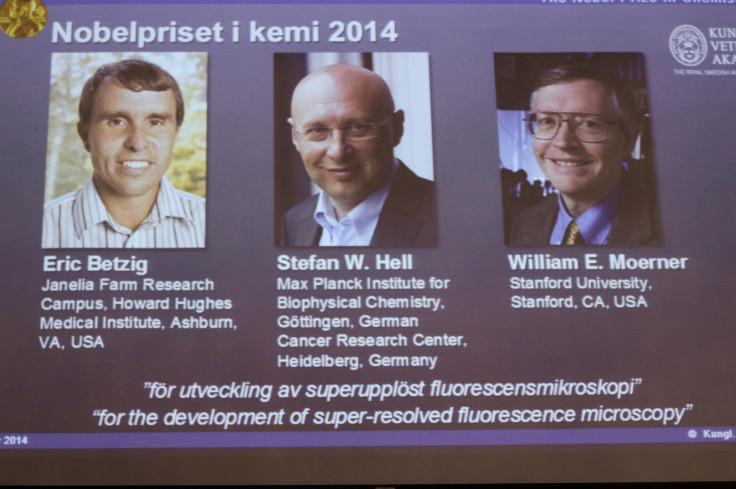Nobel Prize 2014: 'Molecular Microscopy' Scientists Win Chemistry Award

Eric Betzig, Stefan W Hell and William E Moerner have been awarded the 2014 Nobel Prize in Chemistry for their work in developing molecular microscopes.
The trio were named Nobel laureates for the "development of super-resolved fluorescence microscopy", which has "brought optical microscopy into the nanodimension".
Betzing and Moerner, from the US, and Hell, from Germany, undertook ground-breaking work to solve a long-held problem, that optical microscopy would never obtain a better resolution than half a wavelength of light.
Thanks to their work, researchers can visualise pathways of individual molecules inside living cells, meaning they can see how molecules create synapses in the brain and track proteins involved in diseases such as Alzheimer's and Parkinsons.
In 1873, microscopist Ernst Abbe said the physical limit for the maximum resolution of traditional microscopy was 0.2 micrometres.
However, the scientists, from Howard Hughes Medical Institute, Max Planck Institute for Biophysical Chemistry and Stanford University, were able to bypass the long-held limitation through two breakthroughs.
Stimulated emission depletion (STED), developed by Hell, uses two laser beams – one to stimulate fluorescent molecules to glow, while another cancels out all fluorescence except for that in nanometre-size.
Betzig and Moerner paved the way for molecule microscopy by being able to turn fluorescence of molecules on and off. By taking multiple images while letting just a few molecules to glow, the scientists could superimpose the images to see the nano-level.
"Today, nanoscopy is used world-wide and new knowledge of greatest benefit to mankind is produced on a daily basis," the Royal Swedish Academy of Sciences, who award Nobel prizes, said in a statement.
Speaking about getting the award, Hell said: "I love being a scientist."
© Copyright IBTimes 2025. All rights reserved.






















